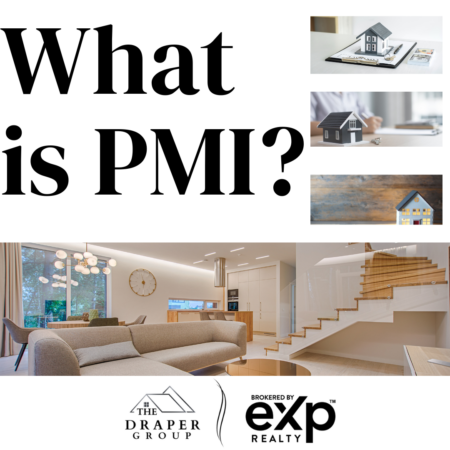
How does mortgage insurance work in australia – Mortgage insurance in Australia: how does it work? This essential financial tool provides peace of mind for both borrowers and lenders, ensuring that even in unforeseen circumstances, the loan can be secured. Understanding the intricacies of mortgage insurance is crucial for anyone seeking to navigate the Australian property market, whether you’re a first-time buyer or a seasoned investor.
Mortgage insurance acts as a safety net, protecting lenders against potential losses if a borrower defaults on their loan. This protection allows lenders to offer loans to borrowers who might not otherwise qualify, especially those with smaller deposits or less-than-perfect credit histories.
What is Mortgage Insurance?
Mortgage insurance is a type of insurance that protects lenders against losses if a borrower defaults on their mortgage loan. It’s essentially a safety net for lenders, ensuring they can recoup their investment even if the borrower is unable to repay their loan. In Australia, mortgage insurance is commonly required for borrowers who are unable to provide a 20% deposit for their property purchase.
Types of Mortgage Insurance
Mortgage insurance in Australia primarily comes in two forms: Lenders Mortgage Insurance (LMI) and Mortgage Protection Insurance (MPI).
- Lenders Mortgage Insurance (LMI) is the most common type of mortgage insurance in Australia. It’s typically required by lenders for borrowers with a deposit of less than 20%. LMI is paid by the borrower upfront as a one-off premium and is designed to protect the lender against losses if the borrower defaults on their loan.
- Mortgage Protection Insurance (MPI) is a type of life insurance that covers the outstanding mortgage balance in the event of the borrower’s death or disability. This type of insurance is not mandatory, but it can provide peace of mind for borrowers and their families. MPI premiums are typically paid monthly and can be included in the borrower’s mortgage repayments.
Situations Where Mortgage Insurance is Typically Required
Mortgage insurance is typically required in situations where the borrower is unable to provide a 20% deposit for their property purchase. This is because lenders perceive borrowers with smaller deposits as having a higher risk of defaulting on their loan.
- First-home buyers often require mortgage insurance as they may not have accumulated a substantial deposit.
- Borrowers with a low credit score may also be required to take out mortgage insurance as they may be perceived as a higher risk by lenders.
- Borrowers with a high loan-to-value ratio (LVR), which is the ratio of the loan amount to the property’s value, may also be required to take out mortgage insurance.
Who Needs Mortgage Insurance?

Mortgage insurance is typically required for borrowers who are unable to meet the standard loan-to-value ratio (LVR) requirements set by lenders. This means that they are borrowing a higher percentage of the property’s value than what lenders are comfortable with without additional risk mitigation.
There are several factors that influence the need for mortgage insurance. These include the size of the deposit, the type of property being purchased, and the borrower’s credit history.
Types of Borrowers
Mortgage insurance is generally required for borrowers who are putting down a smaller deposit. This is because lenders perceive a higher risk in these situations. The minimum deposit requirement for a standard loan is usually 20% of the property’s value. Borrowers who are putting down less than 20% will typically need to take out mortgage insurance.
Eligibility Criteria for Mortgage Insurance
Mortgage insurance companies have their own specific eligibility criteria, which may vary depending on the product. However, generally, borrowers must meet the following requirements:
- Be a resident of Australia.
- Have a good credit history.
- Be able to demonstrate a stable income.
- Be able to meet the lender’s loan serviceability requirements.
Factors Influencing the Need for Mortgage Insurance
The need for mortgage insurance can be influenced by a number of factors, including:
- Loan-to-value ratio (LVR): As mentioned earlier, the LVR is the percentage of the property’s value that is being borrowed. The higher the LVR, the greater the risk for the lender, and the more likely it is that mortgage insurance will be required. For example, a borrower with an LVR of 90% (meaning they are borrowing 90% of the property’s value) will likely need mortgage insurance, while a borrower with an LVR of 80% may not.
- Type of property: Some types of properties are considered higher risk than others, such as investment properties or properties located in areas with high vacancy rates. These properties may require mortgage insurance even if the borrower has a large deposit.
- Borrower’s credit history: A borrower with a poor credit history may be considered a higher risk by lenders, and may be required to take out mortgage insurance.
- Borrower’s income: A borrower with a low income may be considered a higher risk, and may be required to take out mortgage insurance.
How Mortgage Insurance Works in Australia

Mortgage insurance is a type of insurance that protects lenders against losses if a borrower defaults on their mortgage payments. In Australia, mortgage insurance is typically required for borrowers who have a deposit of less than 20% of the property’s value.
Mortgage Insurance Process
The mortgage insurance process in Australia is relatively straightforward. Here’s a step-by-step explanation:
- Application: You apply for mortgage insurance through a lender or an insurance provider. The application process typically involves providing information about your financial situation, the property you are purchasing, and the amount of your mortgage.
- Assessment: The insurer assesses your application and determines whether you meet their eligibility criteria. This may involve a credit check, income verification, and an appraisal of the property.
- Premium Calculation: If your application is approved, the insurer calculates your mortgage insurance premium. This premium is typically a one-off payment, but it can also be paid as a monthly installment.
- Policy Issuance: Once you have paid the premium, the insurer issues you a mortgage insurance policy. This policy provides coverage for the lender against losses if you default on your mortgage payments.
Mortgage Insurance Premium Calculation, How does mortgage insurance work in australia
Mortgage insurance premiums are calculated based on several factors, including:
- Loan-to-Value Ratio (LVR): The LVR is the percentage of the property’s value that is being financed by the mortgage. The higher the LVR, the higher the premium. For example, a borrower with a 10% deposit (90% LVR) will typically pay a higher premium than a borrower with a 20% deposit (80% LVR).
- Loan Amount: The larger the loan amount, the higher the premium.
- Property Type: The type of property being purchased can also affect the premium. For example, premiums for apartments may be higher than premiums for detached houses.
- Borrower’s Credit History: Borrowers with a poor credit history may be charged a higher premium.
- Insurer’s Risk Assessment: Each insurer has its own risk assessment model, which takes into account factors such as the borrower’s income, employment history, and debt-to-income ratio.
Mortgage Insurance Providers in Australia
There are several mortgage insurance providers in Australia, each offering different features and benefits. Here is a comparison of some of the key providers:
| Provider | Features | Benefits |
|---|---|---|
| Genworth Mortgage Insurance | Offers a range of mortgage insurance products, including LMI and lender-paid mortgage insurance. | Provides comprehensive coverage and flexible payment options. |
| QBE Insurance | Specializes in mortgage insurance and offers competitive premiums. | Offers a variety of coverage options to suit different needs. |
| AIG Australia | Provides mortgage insurance as part of its broader insurance offerings. | Has a strong reputation for financial stability and customer service. |
Benefits of Mortgage Insurance
Mortgage insurance offers valuable protection for both borrowers and lenders in the Australian property market. It acts as a safety net, mitigating risks associated with home loans and ensuring financial stability for all parties involved.
Protection for Borrowers
Mortgage insurance provides peace of mind for borrowers by safeguarding them from financial hardship in the event of unforeseen circumstances. It offers a financial cushion, shielding borrowers from the burden of significant debt in situations such as job loss, illness, or death.
- Financial Security: Mortgage insurance acts as a safety net, protecting borrowers from the potential of losing their home due to unexpected events like job loss, illness, or death. It provides a financial cushion, ensuring that the lender is compensated, and the borrower is not left with substantial debt.
- Peace of Mind: Knowing that mortgage insurance is in place can reduce financial stress and provide peace of mind. Borrowers can focus on their lives, knowing that they have a safety net in place should unexpected events occur.
- Access to Larger Loans: Mortgage insurance allows borrowers with smaller deposits to access larger loans. This is especially beneficial for first-time homebuyers who may not have accumulated a substantial deposit. It enables them to enter the property market sooner and build equity in their homes.
Protection for Lenders
Mortgage insurance plays a crucial role in protecting lenders from potential financial losses. It ensures that lenders are compensated for their investment in the event of a borrower’s default, minimizing their risk and encouraging them to offer more favorable loan terms.
- Reduced Risk: Mortgage insurance mitigates the risk of default for lenders. It provides financial protection in case a borrower is unable to repay their loan, ensuring that the lender does not incur significant financial losses.
- Enhanced Lending Capacity: Mortgage insurance enables lenders to extend loans to borrowers with lower deposits or higher loan-to-value ratios. This allows lenders to expand their customer base and increase their lending capacity.
- Stable Investment: Mortgage insurance contributes to a more stable investment environment for lenders. It protects their investments and provides confidence in the long-term sustainability of the Australian mortgage market.
Common Scenarios Where Mortgage Insurance Provides Financial Protection
Mortgage insurance offers protection in a variety of situations, providing financial security and peace of mind for both borrowers and lenders.
- Job Loss: In the event of job loss, mortgage insurance can help borrowers cover their mortgage payments while they search for new employment. It prevents foreclosure and allows borrowers time to recover financially.
- Illness or Disability: If a borrower becomes ill or disabled and unable to work, mortgage insurance can cover their mortgage payments, ensuring that they do not lose their home.
- Death: In the unfortunate event of a borrower’s death, mortgage insurance can pay off the remaining mortgage balance, protecting the surviving family members from financial hardship.
- Natural Disasters: Mortgage insurance can provide financial assistance in the event of natural disasters, such as floods or bushfires, that damage a borrower’s home and make it difficult to repay their mortgage.
Costs and Considerations
Mortgage insurance, while offering valuable protection, comes with a cost. Understanding the associated expenses and factors influencing them is crucial for making informed decisions.
Cost of Mortgage Insurance
The cost of mortgage insurance is typically expressed as a percentage of the loan amount, and it is calculated based on several factors, including the loan-to-value ratio (LVR), the borrower’s credit score, and the type of mortgage.
- Loan-to-Value Ratio (LVR): The higher the LVR, the greater the risk for the lender, leading to higher premiums. For instance, a borrower with an LVR of 90% (meaning they borrowed 90% of the property’s value) will likely pay a higher premium than someone with an LVR of 80%.
- Credit Score: A borrower with a strong credit history and a good credit score is considered less risky, resulting in lower premiums. Conversely, a borrower with a poor credit score may face higher premiums.
- Type of Mortgage: The type of mortgage, such as a fixed-rate or variable-rate mortgage, can also affect the cost of mortgage insurance. Some lenders may offer different premiums for different mortgage types.
Mortgage Insurance Premiums
Mortgage insurance premiums vary across different providers, with each lender offering its own pricing structure. It’s essential to compare premiums from multiple providers to secure the best deal. Factors like the lender’s risk appetite, operational costs, and market competition influence their pricing strategies.
- Comparison Websites: Websites dedicated to comparing mortgage insurance premiums can help you get an overview of different providers and their pricing.
- Direct Contact: Contacting multiple lenders directly to request quotes is another way to compare premiums. This allows you to ask specific questions and understand the terms and conditions of each provider.
Factors Influencing Mortgage Insurance Costs
Several factors can influence the cost of mortgage insurance, beyond the LVR, credit score, and mortgage type.
- Property Location: The location of the property can impact the risk assessment, leading to variations in premiums. For example, properties in areas prone to natural disasters may have higher premiums due to the increased risk of damage or loss.
- Property Type: The type of property, such as a detached house, apartment, or townhouse, can also affect the cost of mortgage insurance. Some lenders may offer different premiums for different property types based on their perceived risk.
- Loan Term: The length of the loan term can also impact the cost of mortgage insurance. Longer loan terms generally involve higher premiums as the lender is exposed to the risk for a longer period.
Conclusion: How Does Mortgage Insurance Work In Australia

In conclusion, mortgage insurance plays a vital role in the Australian property market, offering a vital safety net for both borrowers and lenders. By understanding the various aspects of mortgage insurance, including its purpose, types, costs, and alternatives, individuals can make informed decisions that align with their financial goals and risk tolerance. Whether you’re seeking to secure your first home, refinance an existing mortgage, or explore investment opportunities, understanding the intricacies of mortgage insurance can empower you to navigate the Australian property market with confidence.
FAQ Corner
What are the common types of mortgage insurance in Australia?
The most common types of mortgage insurance in Australia are lenders mortgage insurance (LMI) and mortgage indemnity insurance (MII). LMI is typically required for borrowers with a smaller deposit, while MII is often used for borrowers with higher-risk profiles.
How much does mortgage insurance cost?
The cost of mortgage insurance varies depending on factors such as the loan amount, loan-to-value ratio (LVR), borrower’s credit score, and the specific insurance provider. It’s usually calculated as a percentage of the loan amount.
Is mortgage insurance mandatory in Australia?
Mortgage insurance is not mandatory in Australia. However, it is often required by lenders for borrowers who have a smaller deposit or who pose a higher risk to the lender.





